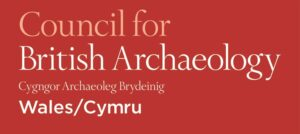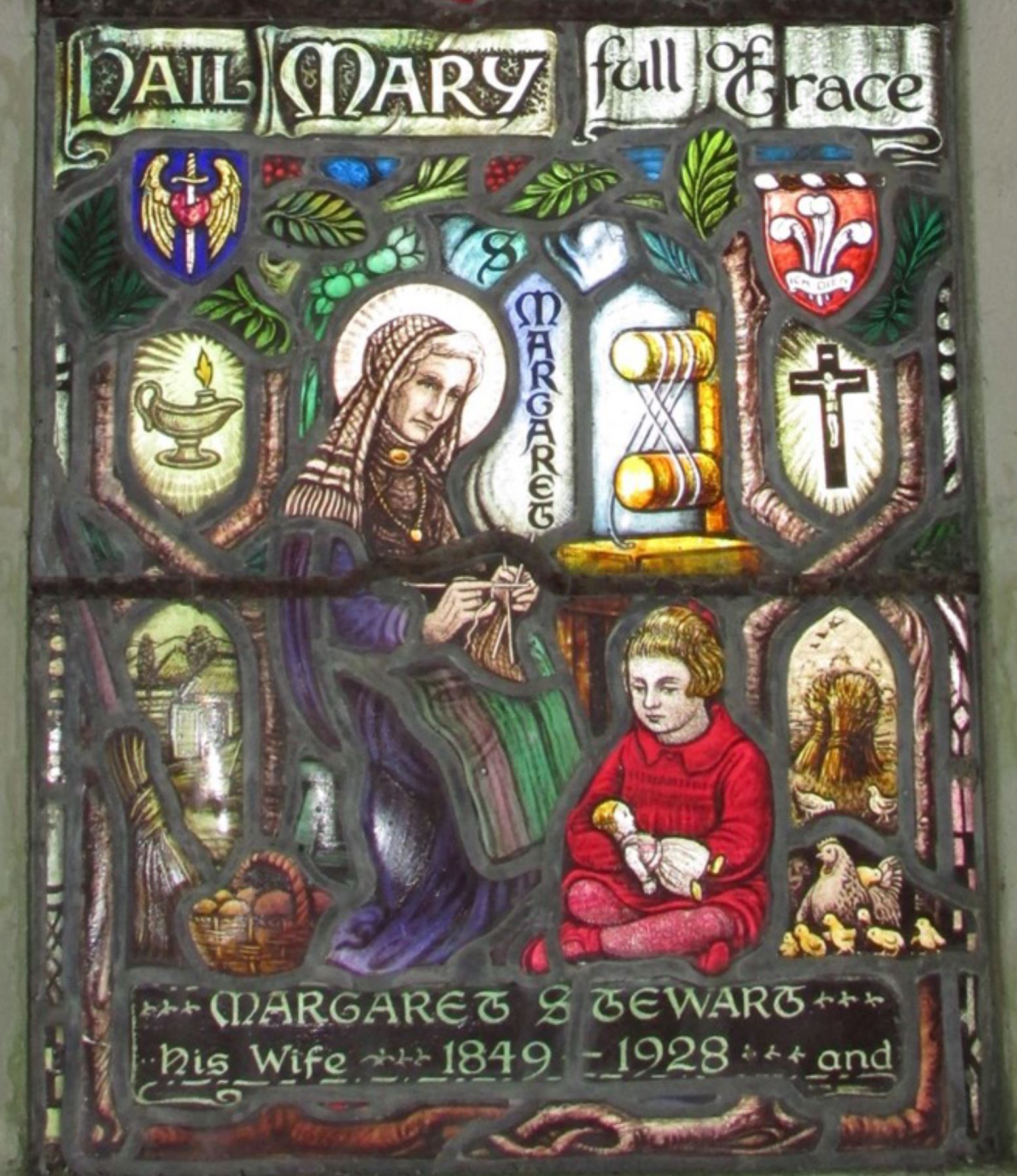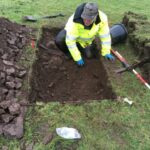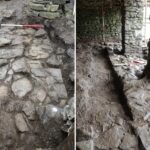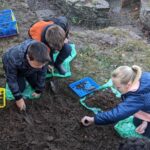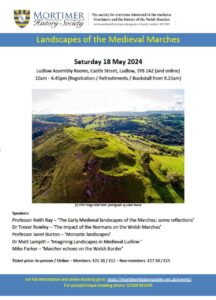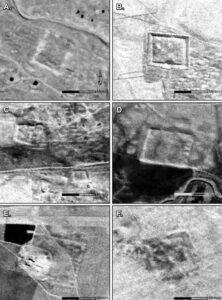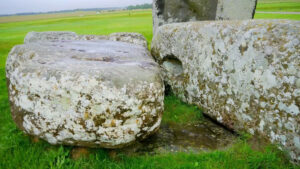Redundant parish churches are becoming common across rural Wales, as congre-gations decline and the Church in Wales moves towards a more central delivery model. You may remember the discovery, in 2013, of a 9th to 10thcentury cross carved stone (Silian 3) in a stream outside St Sulien’s Church (NPRN 402554) near Lampeter. Perhaps you visited the church during EMWARG’s fieldtrip the following year. It stands within a curvilinear churchyard, itself mirrored by a concentric field boundary representing a possible outer enclosure. A second piece of 9th- to 10th-century stone sculpture (Silian 2) lies loose within the church and a 5th- to 6th-century inscribed stone (Silian 1) in the south wall commemorates Silbandus, probably the individual from which church and settlement derive their names. A Romanesque font bowl, with four projecting carved heads, is part of a regional group of stylistically similar fonts in the Teifi Valley. The evidence suggests a site of significance.
Today, Silian is typical of small rural communities in West Wales, with no amenities and in one of Wales’ most deprived areas in terms of access to services. The church, a focal point at the village centre, lies redundant. As such, the building is at risk and its contents could be removed, which would sever their direct relationship with the site. This would result in the break up of the collection of carved stones (Silian 1 being incorporated into the building fabric) and the window would be unlikely to remain in Britain due to a lack of repositories for redundant stained glass.

The former church is central to community identity and its sense of place within the wider locality. It also offers the only potential for an indoor community space. To this end, villagers formed a Community Benefit Society (CBS) and the Church in Wales has agreed to a long term lease. The CBS (Menter Silian) will seek project funding to transform the building into a multi-purpose community hub. A feasibility study found the project viable and a 5-year business plan has just been completed. A key challenge is the adaptation of a historic building for modern-day use, retaining its character while providing a comfortable, multi-functional space. It must also be financially sustainable and will offer small scale tourist accommodation as a means of income.
Source: CBAW Newsletter 63, Spring 2022
